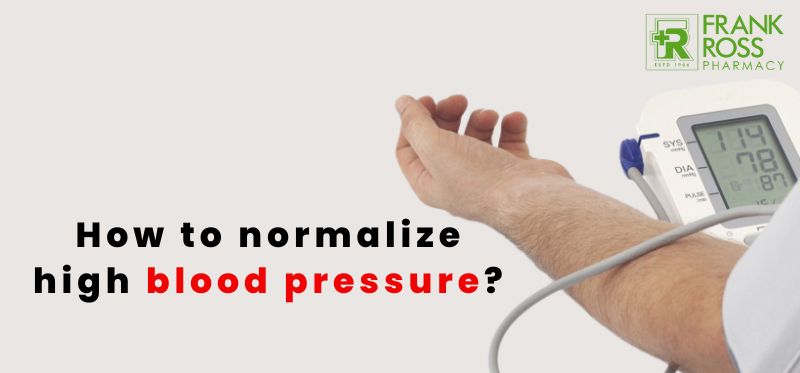As temperatures rise during the summer months, learning how to manage blood pressure becomes even more crucial for individuals with hypertension or anyone at risk. High temperatures can have a significant impact on blood pressure levels, sometimes leading to unexpected fluctuations and potential health complications. Understanding how heat affects your body and following the right steps for how to manage blood pressure can help you maintain healthy blood pressure, even on the hottest days.
How High Temperatures Affect Blood Pressure
When the weather is hot, your body works harder to keep itself cool. High temperatures can cause blood vessels to dilate, which sometimes lowers blood pressure temporarily. However, for people with hypertension or those sensitive to temperature changes, this can create instability in blood pressure levels. During the summer months, dehydration frequently occurs and can cause a decrease in blood volume, making it more challenging when figuring out how to manage blood pressure effectively. This is why it’s essential to be extra cautious and actively focus on how to manage blood pressure during high temperatures.
Signs Your Blood Pressure is Affected by Heat
It’s important to recognize the symptoms that indicate your blood pressure might be affected by the heat. Watch out for signs such as dizziness, headaches, excessive sweating, fatigue, rapid heartbeat, and dehydration. In some cases, you may feel unusually weak or even faint. If these symptoms persist or worsen, it is crucial to consult your doctor. Early intervention is a key part of how to manage blood pressure and can prevent serious complications related to blood pressure fluctuations during the summer.
Tips on How to Manage Blood Pressure During High Temperatures
Stay Hydrated
Maintaining proper fluid intake is a top strategy for how to manage blood pressure in the summer. As the temperature rises, your body loses more fluids through sweat, making dehydration—and the resulting blood pressure fluctuations—a real concern. To support healthy blood pressure, make it a habit to sip water regularly all day long, regardless of whether you feel thirsty or not. Including water-rich foods like cucumbers, watermelon, and oranges in your diet also helps maintain adequate hydration.
Avoid Excessive Sun Exposure
Limiting your exposure to direct sunlight during peak hours—usually between 10 am and 4 pm—can protect your body from overheating. If you need to be outdoors, wear light-colored, breathable clothing, use sunscreen, and seek shade whenever possible. Avoid strenuous outdoor activities during the hottest parts of the day to prevent your blood pressure from dropping too low due to excessive heat. This is a practical step in how to manage blood pressure safely in summer.
Monitor Your Blood Pressure Regularly
Consistent monitoring is a vital part of how to manage blood pressure during high temperatures. Keep track of your blood pressure at home, especially if you have a history of hypertension. Invest in a reliable digital blood pressure monitor and check your readings at the same time each day. Write down your blood pressure numbers and show them to your doctor during your visits for better, individualized care.
Eat a Heart-Healthy Diet
A balanced, heart-healthy diet is essential when considering how to manage blood pressure. Focus on fresh fruits, leafy greens, whole grains, and low-sodium options. Avoid processed foods and salty snacks, as they can contribute to water retention and higher blood pressure. Meals rich in potassium, such as bananas and sweet potatoes, can help counteract sodium’s effect on blood pressure.
Medication Management
Never skip your blood pressure medication, even if you feel better in summer. Heat can sometimes mask symptoms, making it seem like your blood pressure is under control when it’s not. How to manage blood pressure also means taking medication exactly as prescribed and consulting your doctor before making any changes. If you notice unusual side effects in the heat, your healthcare provider can adjust your treatment plan accordingly.
Lifestyle Habits to Support Healthy Blood Pressure
Incorporating gentle physical activity like walking, yoga, or swimming into your daily routine is another key part of how to manage blood pressure. Practice stress management techniques such as meditation and deep breathing exercises to keep your mind and body calm. Don’t overlook the importance of getting enough restful sleep, as it plays a vital role in cardiovascular health, especially during summer.
When to Seek Medical Help
If you experience severe symptoms—such as chest pain, extreme dizziness, confusion, or persistent headaches—seek medical help immediately. Regular health check-ups are also essential for how to manage blood pressure and making necessary adjustments to your management plan during high temperatures.
Conclusion
Learning how to manage blood pressure during high temperatures requires extra attention, but it’s entirely achievable with the right habits. Prioritize hydration, limit sun exposure, monitor your blood pressure, eat a heart-healthy diet, and maintain a healthy lifestyle. Stay proactive and consult your doctor whenever needed to ensure a safe and healthy summer.





